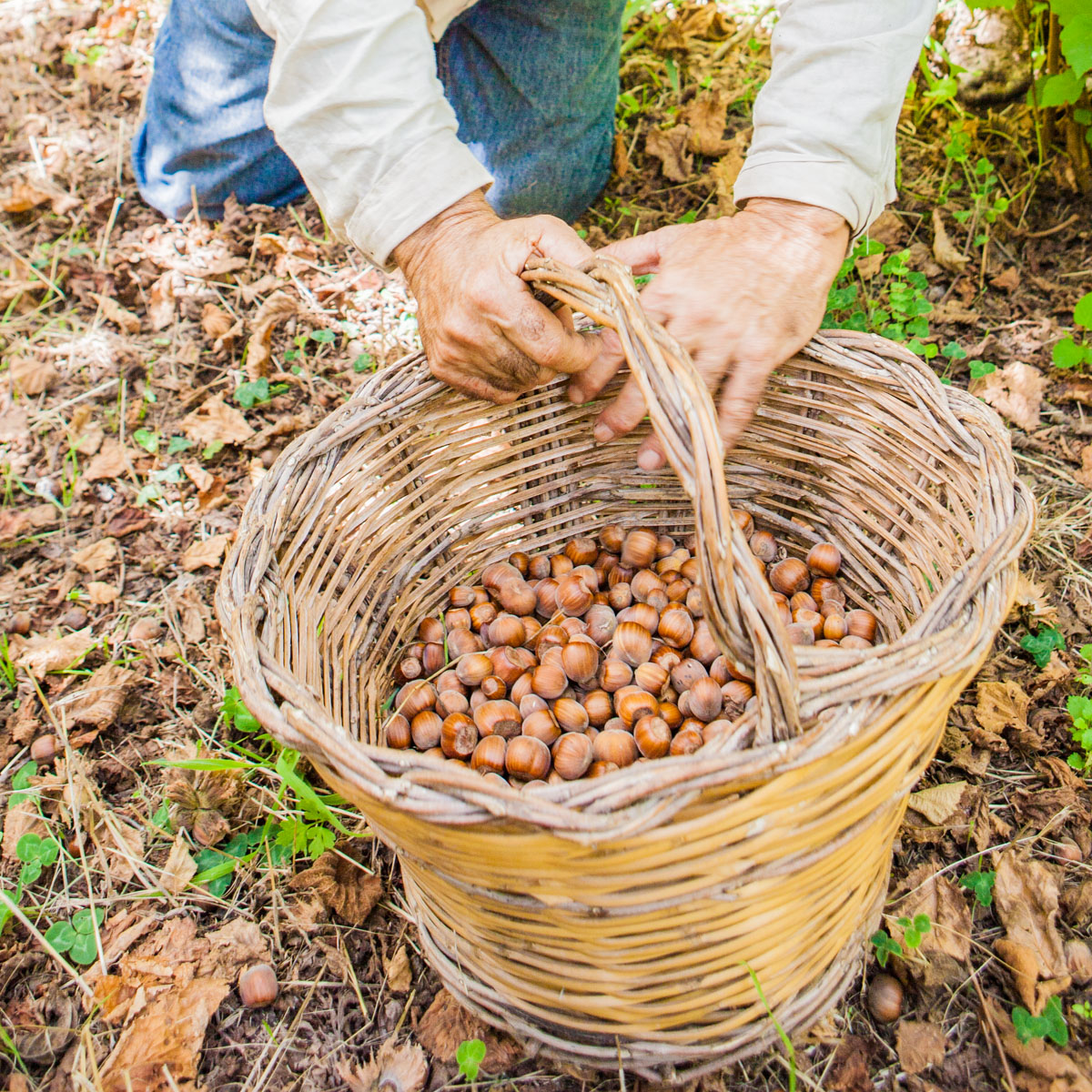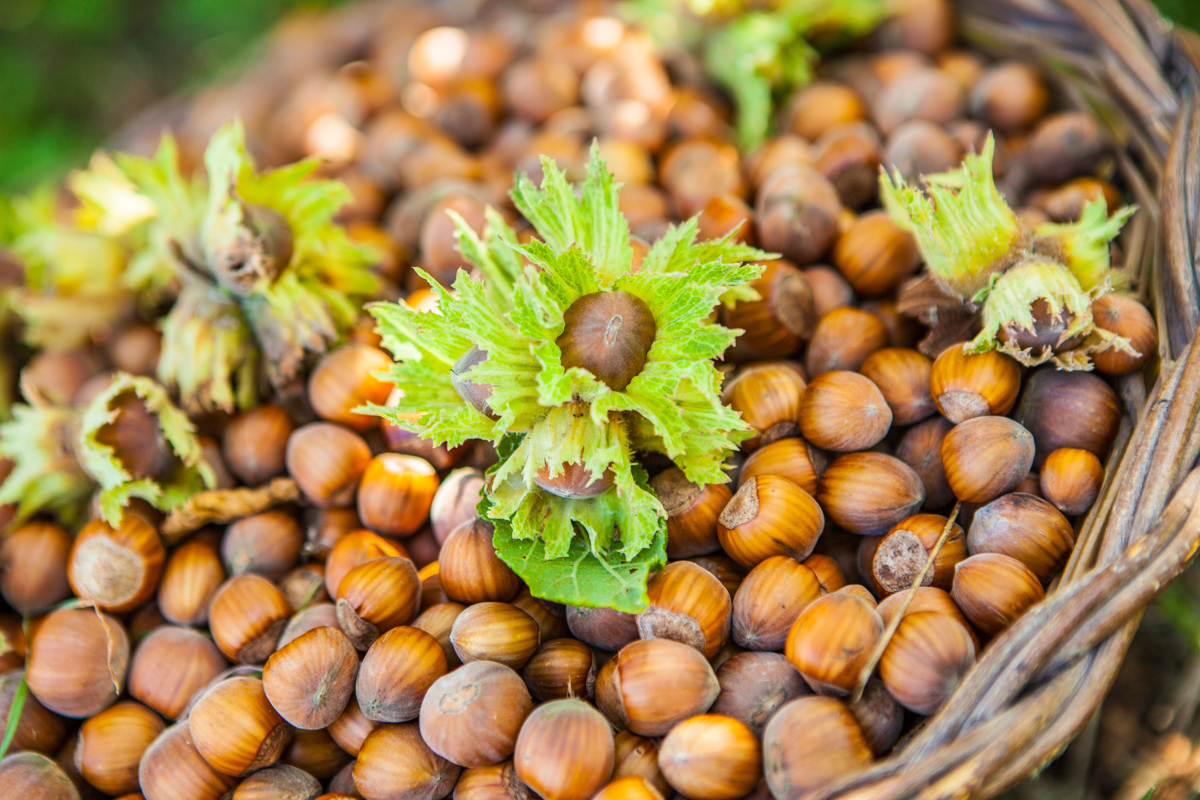Spulicari – Collecting Hazelnuts
You would never guess that our friend Carmelo Mangano is in his mid-70’s, and I’m convinced that his many annual foraging activities, like gathering hazelnuts, play a big part in his good health and youthful exuberance. Carmelo has been collecting hazelnuts since he was 10 years old. We joined him in a beautiful hazelnut grove in Castiglione di Sicilia, along with his friend Egidio (who Carmelo has known since he was 5 years old). As we kneeled under the trees, he told us stories of his childhood until our wicker baskets were overflowing with hazelnuts.
Carmelo explained that when he was a boy, after the official harvest season was done in September or October there was a tradition of allowing people to collect leftover crops for free. This gleaning activity was called “spigolare” in Sicilian, from the word “spiga” which means the grain on a stalk of wheat. Spigolare was an important resource for the poor and in some cases it provided not only food, but enough money to live for two to three months. The collection of hazelnuts after the harvest was called “spulicari”, which refers to someone checking your pockets for something you might have hidden inside them. To find the left over hazelnuts you might have to look carefully on the ground underneath leaves covering up the nuts, so it was like finding something inside a pocket. For Carmelo and his childhood friends, spulicari was an annual tradition.
“We would walk barefoot so you could feel the nuts left on the ground after harvest. I would pick with my friends and we would use money to buy books, a new pair of shoes, ice cream, and go to cinema every fall.”
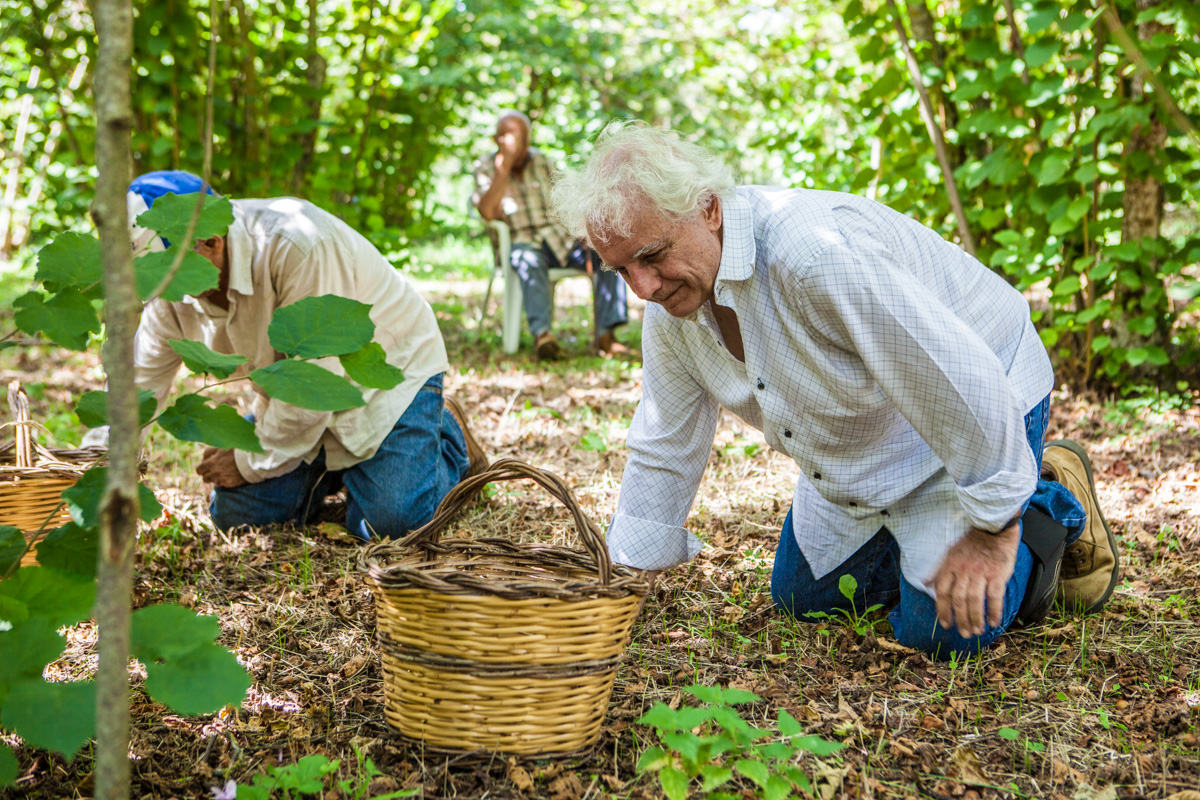
Carmelo shakes the branches of one of the trees so that all of the ripe hazelnuts fall to the ground and he demonstrates how the nuts should be collected to fill the baskets as quickly as possible.
“It was traditional to pick hazelnuts bending at the waist, but it’s more comfortable to kneel. The problem with kneeling is that you waste time getting up and down off of one knee to move forward. You collect faster if you use two hands at the same time and you keep moving the basket forward with you as you go. Women were faster at collecting because they wore aprons to put the nuts in, rather than having to keep moving a basket along. They could just walk and continuously fill up their aprons.”
Hazelnut trees were originally brought to Sicily by the Spanish and there are many varieties that grow in Mount Etna’s fertile soil. Carmelo explains that the wild varieties (Sabbaggiu in Sicilian) are small, shiny, last a very long time, and are the most disease-resistant. Sabbagguina, he says, is the Sicilian name for a wild hazelnut tree and it’s fruit. He laughs and adds that Sabbaguina is also what you might call a naughty child or a wild person.
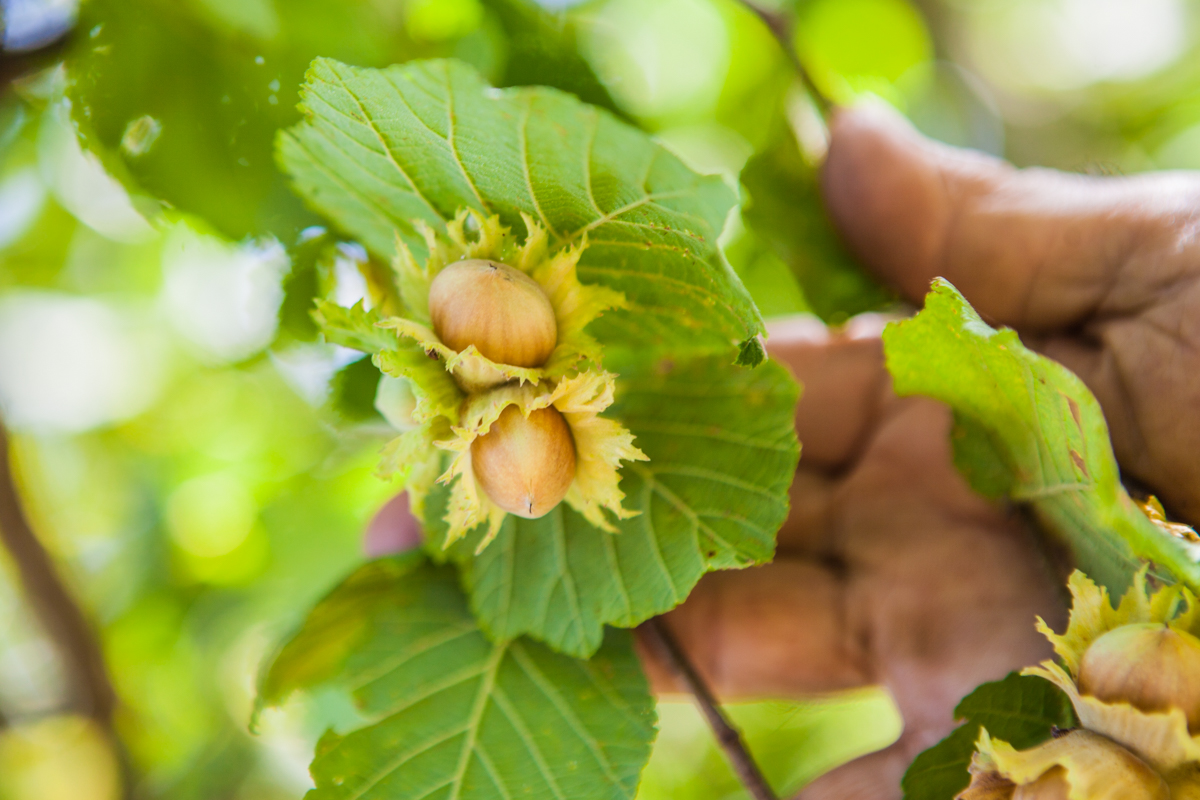
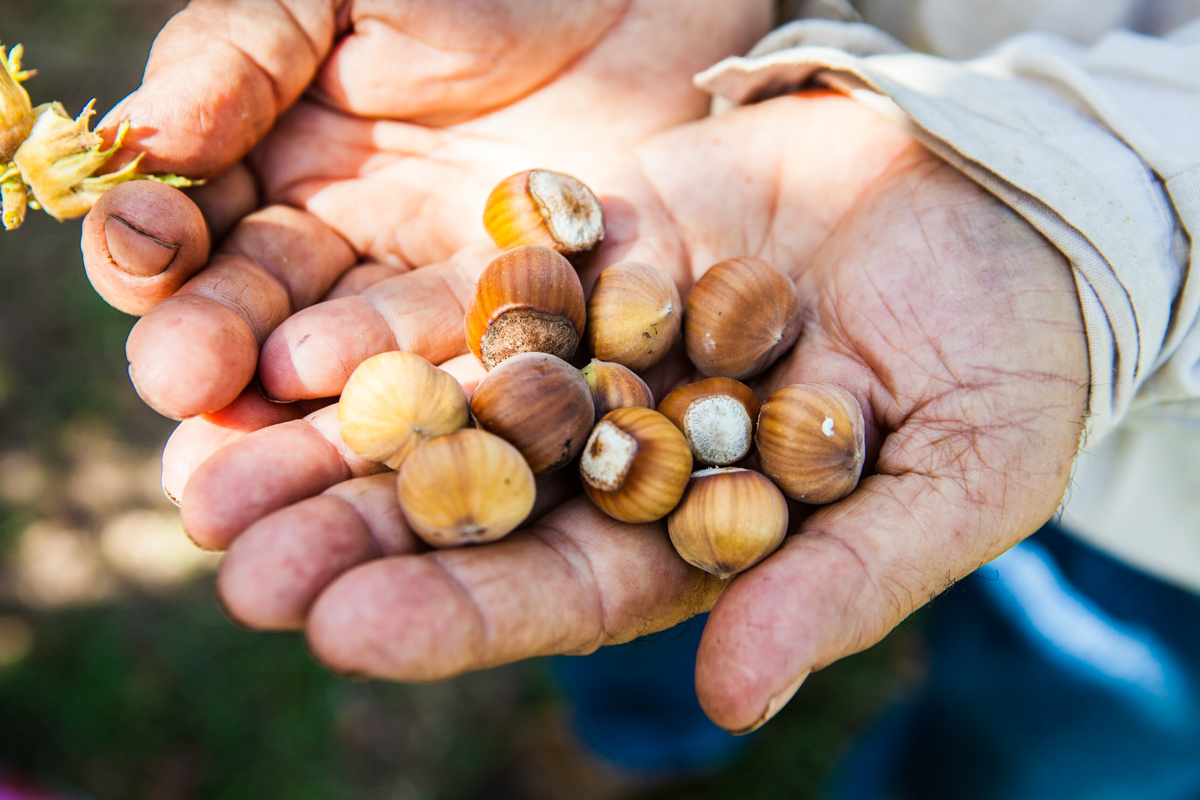
Back at Carmelo’s house about a week later, his wife Debbie is showing me the mostarda (traditional Sicilian harvest time desert) she has drying on a balcony upstairs. She tells me to watch my step as she flicks on the light. One half of the entire floor of the large room is covered in a thick layer of hazelnuts, laid out to dry. Then she shows me another smaller room nearby completely covered in hazelnuts so you can’t even see the floor. I ask Carmelo what he planning to do with his incredible bounty.
“I’m going to keep some for the winter and sell the rest. I’ll use the money we raise to have a party with all my friends.”
When I look at the sparkle in his eyes, I see that ten year old boy – a gelato in his hand, heading to the cinema with his friends, proudly enjoying the results of their spulicari.


